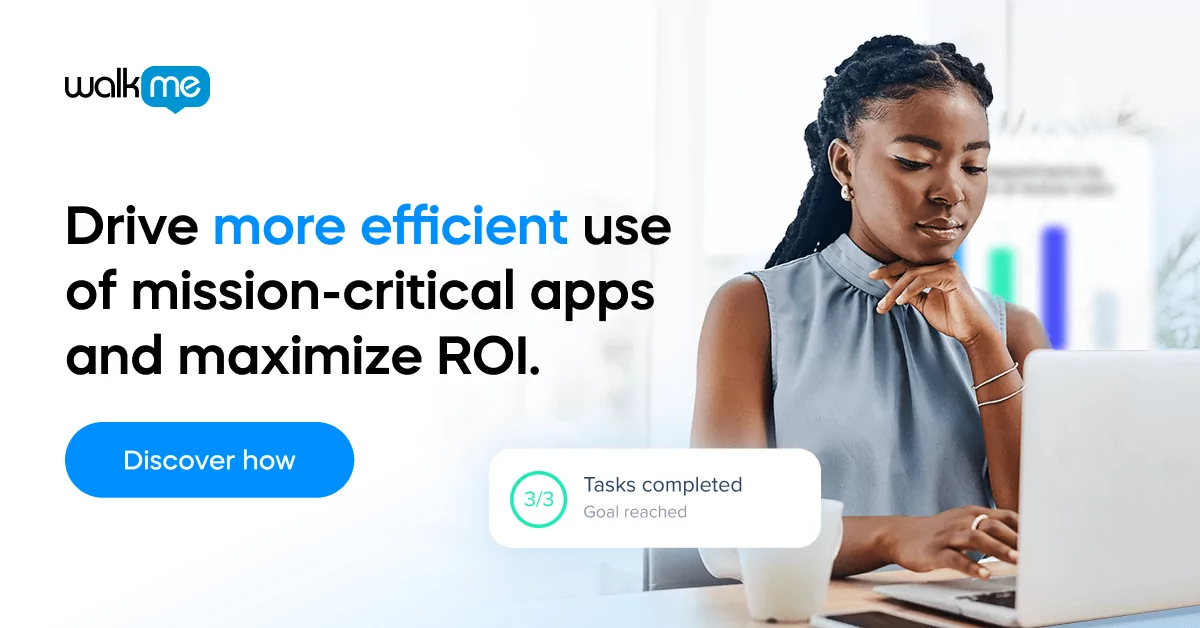Composability is essential to maintain an agile workforce, workplace, and organization.
Gone are the days when employees use a single software application, such as Excel, to perform workplace tasks. Well, hopefully at least.
Instead, employees should use the variety of digital tools available in their everyday workflows.
The ability to fully leverage those tools and move seamlessly between them depends less on proficiency with one tool and more on other factors, such as employees’ digital savviness and the composition of their digital workflows.
Poorly composed digital ecosystems increases complexity, decreases efficiency, and ultimately affects organizational agility.
Below, we’ll explore the concept of composability and how it can improve organizational agility.
What is composability and how does it improve business agility?
Service composability is a system design principle that refers to the reuse of modular components to create multiple solutions.
That principle is also being applied in business to a number areas within IT and the digital workplace, including:
Digital workflows. The selection of individual software applications certainly matters, but since employees use so many tools simultaneously, so too does the composition of their daily workflows. This involves choosing the right business software, building tightly integrated software stacks, and providing employees with the tools they need to operate efficiently.
IT infrastructure. As we will see below, IT infrastructure can also be composed automatically and in real-time. Automated IT resource allocation can reduce waste, cut costs, and greatly improve efficiency.
Software design. Composability is a design principle that can also be applied to software design. A composable software application would consist of modular components that can be fit together as needed to form a customized application.
Composability, in other words, can simplify virtually any area of the business, from back-end IT operations to the user experience to the workplace itself.
When applied to the workplace and software ecosystems, well-composed workflows will:
Reduce digital complexity. The proper composition of workflows can reduce wasted time, effort, and, as a result, decrease software-related frustration. Well-composed workflows also reduce errors and can contribute to an employee experience that is both more pleasant and more efficient.
Open up entirely new business possibilities. One way to innovate is by combining existing technologies in new ways. An organization that finds new ways to integrate workflows across applications will open up the door to potential optimization that may not otherwise be possible.
Fuel organizational agility. Agility depends on management’s ability to quickly design and implement new business processes, and on employees’ openness to accept such changes. This type of flexibility requires a mindset that focuses on composability and cross-platform workflows, rather than on proficiency with an individual software tool.
In short, digital tools enable new and innovative possibilities in the business world, yet at the same time, those same tools can create complexity and fragmentation.
To mitigate the consequent risks and inefficiencies, today’s business leaders and managers must take a high-level view of business process design, composition, and optimization.
So, what does composability actually look like in the modern organization?
Examples of composable IT solutions
Composability is a principle that can be applied to various areas of a business, and the benefits derived will naturally depend on where and how the concept is used.
Here are two examples of companies that are using this principle in their own IT solutions to integrate and simplify business processes:
WalkMe
WalkMe’s digital adoption platform (DAP) is a UX layer that sits atop software applications and guides users in order to streamline adoption, onboarding, and training.
The WalkMe DAP includes features such as:
- In-depth usage analytics
- Contextualized, in-app walkthroughs
- Automation tools
- Self-service portals
WalkMe can be used across multiple platforms, making it ideal for workflow integration, cross-platform training, and business process management.
As organizations become more agile and dynamic, tools such as WalkMe’s DAP will be essential for maintaining employee productivity in the face of increasing workplace complexity.
HP
Computing environments, like workplaces, are becoming more dynamic by the day.
IT systems and applications, must frequently operate in hybrid infrastructures that span several types of computing environments, including:
- Traditional
- Cloud
- Virtual
- Containerized
Manually navigating this landscape can become inefficient and burdensome, which is why HP recommends an approach that automatically composes and recomposes software-defined IT infrastructure as needed.
Like self-driving cars, HP’s self-driving data center will be autonomous, efficient, and resilient.
Becoming more agile with composable IT solutions
Agility is a business approach, while composability is a principle, as we saw above.
Yet both tend to lead us in the same direction – towards a mindset that focuses more on adaptability and flexibility, rather than on static processes and tools.
From this viewpoint, individual tools are not standalone products, they are interchangeable components of dynamic workflows and processes.
For some business professionals, this may require rethinking existing views of how businesses operate. Learning more about composable software, agile methodology, lean thinking, and other modern business methodologies is a good way to get started.
For those who already understand the value of composability and agility, however, the challenge may lie in educating one’s peers on the concepts covered above.
Fundamentally, it is important to recognize that composability and agility represent a new mindset – a mindset that every organization will need to adopt in order to stay competitive in tomorrow’s fast-paced digital future.


